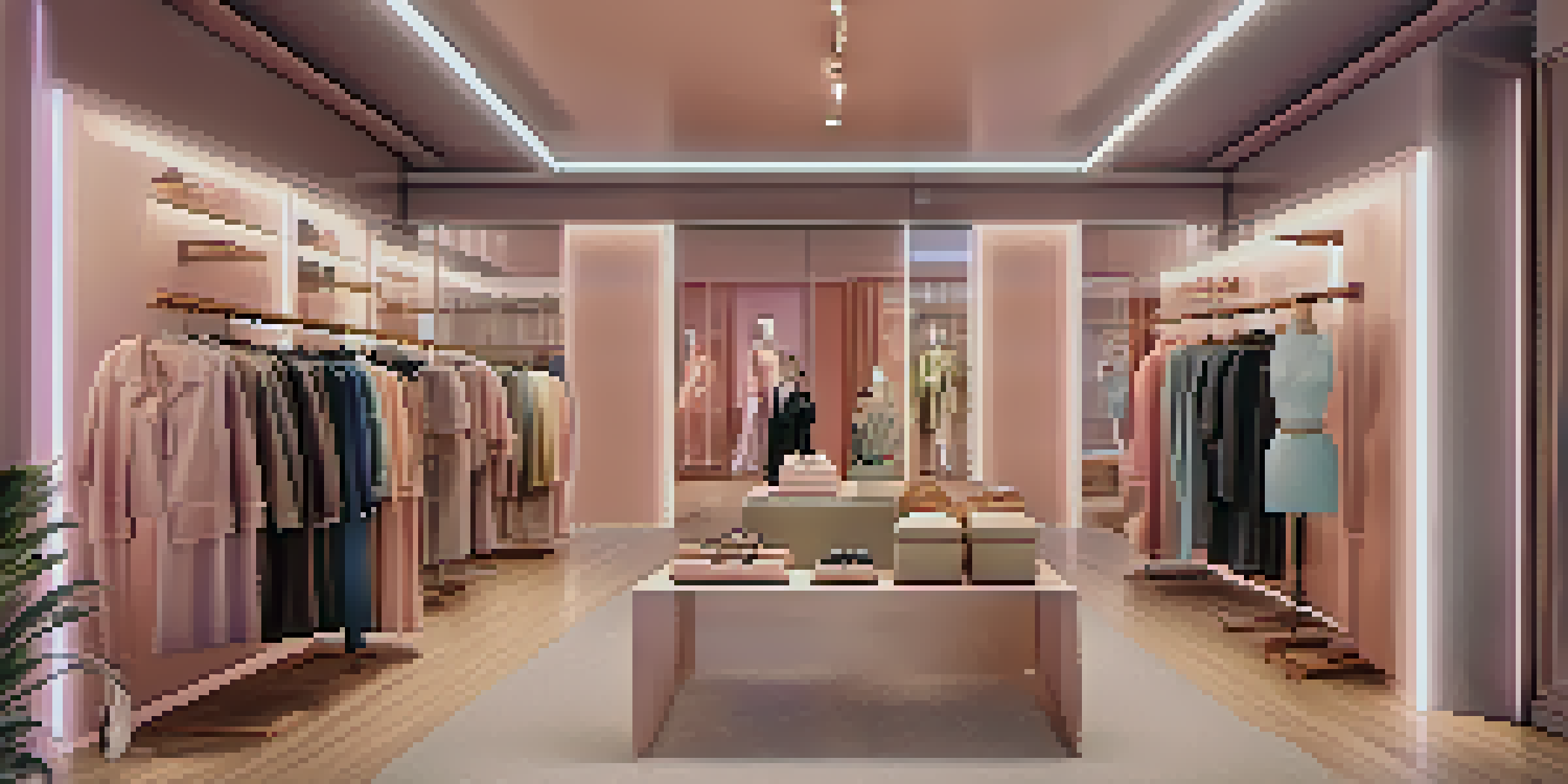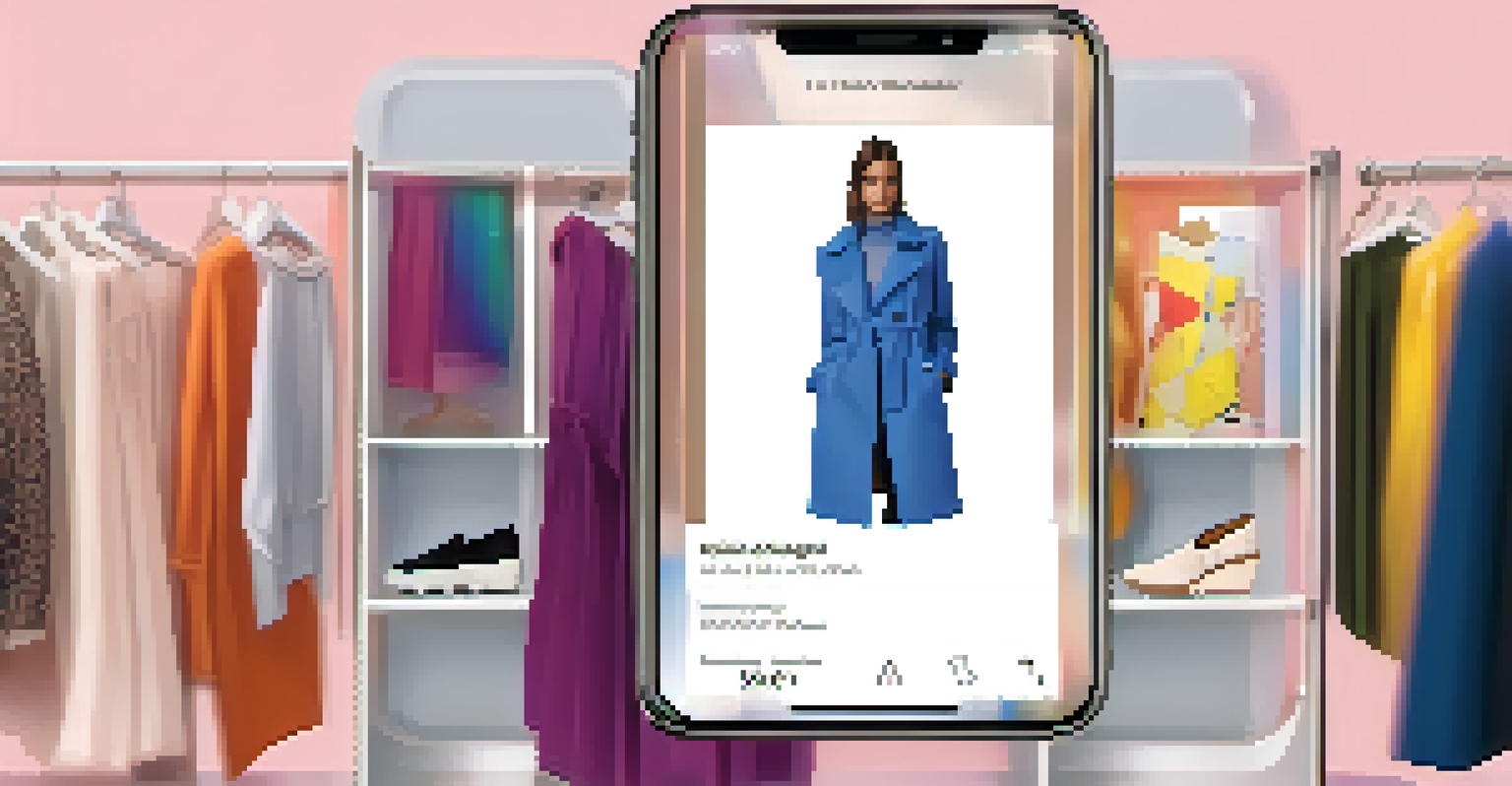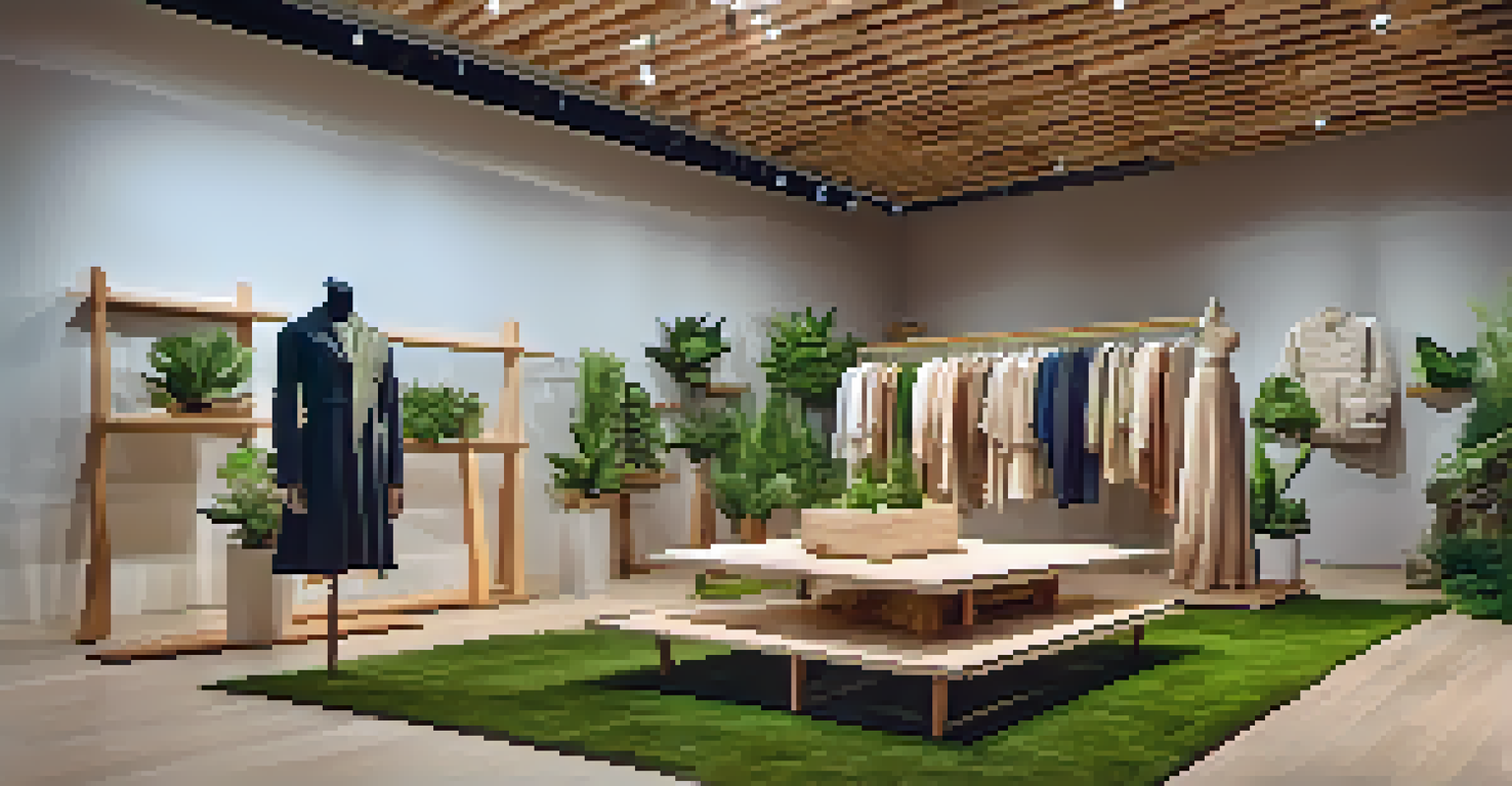How AI is Shaping Personalized Fashion Choices for Consumers

Understanding AI in the Fashion Industry
Artificial Intelligence (AI) is revolutionizing various sectors, and fashion is no exception. By leveraging data and algorithms, AI analyzes consumer preferences and trends to create a more personalized shopping experience. This technology helps brands understand what styles resonate with their audience, making it easier to cater to individual tastes.
The best way to predict the future is to create it.
Imagine walking into a store where everything feels curated just for you. AI makes this possible by analyzing your past purchases, browsing history, and even social media activity. It’s like having a personal stylist at your fingertips, ready to suggest outfits that align with your unique style.
As AI continues to evolve, its ability to predict fashion trends based on consumer behavior becomes more sophisticated. This means that brands can not only respond to current preferences but also anticipate future demands—creating a win-win scenario for both consumers and retailers.
Personalized Recommendations and Shopping Experiences
One of the most significant impacts of AI in fashion is the rise of personalized recommendations. Platforms like Stitch Fix and Amazon use AI algorithms to suggest clothing items tailored to individual tastes and sizes. This level of personalization enhances the shopping experience, making it more enjoyable and less overwhelming.

Think about how Netflix recommends shows based on your viewing history. Similarly, AI in fashion analyzes what you’ve liked or purchased to suggest new items you might love. This tailored approach not only saves time but also increases the likelihood of finding that perfect outfit.
AI Personalizes Fashion Shopping
Artificial Intelligence enhances the shopping experience by providing tailored recommendations based on individual preferences and behaviors.
Moreover, these recommendations often come with a social element, allowing consumers to share their finds with friends or seek feedback before making a purchase. It’s a blend of technology and community that transforms the way we shop.
Virtual Try-Ons: Bridging the Gap Between Online and Offline
Virtual try-ons have emerged as a game-changer in the online shopping landscape. Using augmented reality (AR) and AI, consumers can visualize how clothes will look on them before making a purchase. This technology addresses one of the biggest challenges of online shopping: the inability to try before you buy.
Fashion is about something that comes from within you.
Imagine being able to see how a dress fits you without stepping into a fitting room. Virtual try-ons provide that experience, making online shopping more interactive and satisfying. This innovation not only boosts consumer confidence but also reduces return rates for retailers.
As this technology becomes more widely adopted, consumers can expect an increasingly immersive shopping experience that merges the convenience of online shopping with the tactile nature of in-store experiences.
AI-Powered Style Assistants and Chatbots
AI-powered style assistants and chatbots are redefining customer service in the fashion industry. These tools can answer queries, provide style advice, and even help with outfit selection, all in real-time. It's like having a knowledgeable friend available 24/7 to assist with your fashion choices.
For example, consider how a chatbot can guide you through the process of finding the right outfit for a specific occasion. It can ask questions about your preferences and suggest items that match your style. This personalized interaction enhances the shopping experience and builds a connection between the consumer and the brand.
Virtual Try-Ons Enhance Confidence
Augmented reality and AI technologies allow consumers to virtually try on clothes, bridging the gap between online and offline shopping.
As these tools become more advanced, they will incorporate machine learning to understand consumer preferences better, offering increasingly tailored advice and recommendations.
Sustainable Fashion Choices Through AI Insights
Sustainability is a growing concern in the fashion industry, and AI is playing a pivotal role in promoting eco-friendly choices. By analyzing consumer behavior, AI can identify trends that favor sustainable materials and practices. This insight helps brands adjust their offerings to meet the demand for environmentally responsible fashion.
For instance, AI can track which sustainable items are trending and forecast future preferences. This allows brands to produce more of what consumers want, reducing waste and promoting sustainable practices. It’s a proactive approach to fashion that benefits both the planet and the consumer.
Additionally, AI can help consumers make informed choices by providing information about the environmental impact of different materials. This transparency empowers shoppers to choose brands that align with their values.
The Role of Data Analytics in Fashion Innovation
Data analytics is at the heart of AI-driven fashion personalization. By gathering insights from various sources—like online browsing behavior, social media interactions, and purchase history—brands can create comprehensive profiles of their consumers. This data-driven approach enables them to innovate and refine their offerings continuously.
Think of it as a treasure trove of information that reveals what styles, colors, and fits are currently in demand. Brands can leverage this knowledge to launch targeted marketing campaigns and design collections that resonate with their audience.
AI Supports Sustainable Fashion
AI analyzes consumer behaviors to promote eco-friendly choices and help brands align their offerings with sustainable practices.
As data analytics becomes more advanced, fashion brands will be better equipped to respond to changing consumer preferences, ensuring they remain relevant in a fast-paced industry.
The Future of AI in Personalized Fashion
Looking ahead, the future of AI in personalized fashion is incredibly promising. As technology continues to evolve, we can expect even more innovative solutions that enhance the shopping experience. From hyper-personalized recommendations to advanced virtual fitting rooms, the possibilities are endless.
Imagine a world where your wardrobe is fully digitized, and an AI assistant curates outfits based on your schedule, mood, and even the weather. This level of personalization could transform the way we approach fashion and self-expression.

Ultimately, as AI continues to shape the fashion landscape, consumers will enjoy an increasingly tailored shopping experience that aligns with their unique preferences and lifestyles.